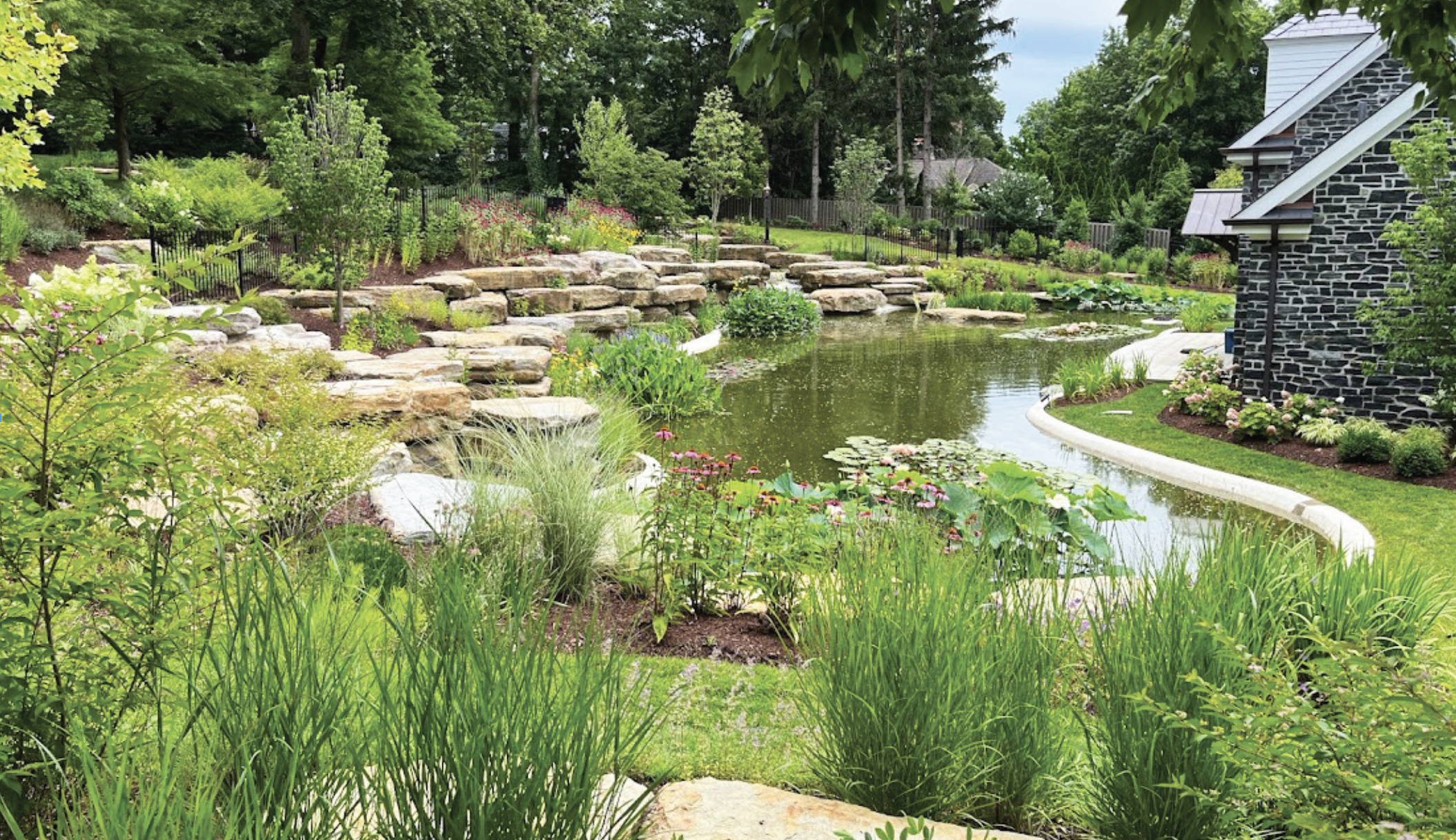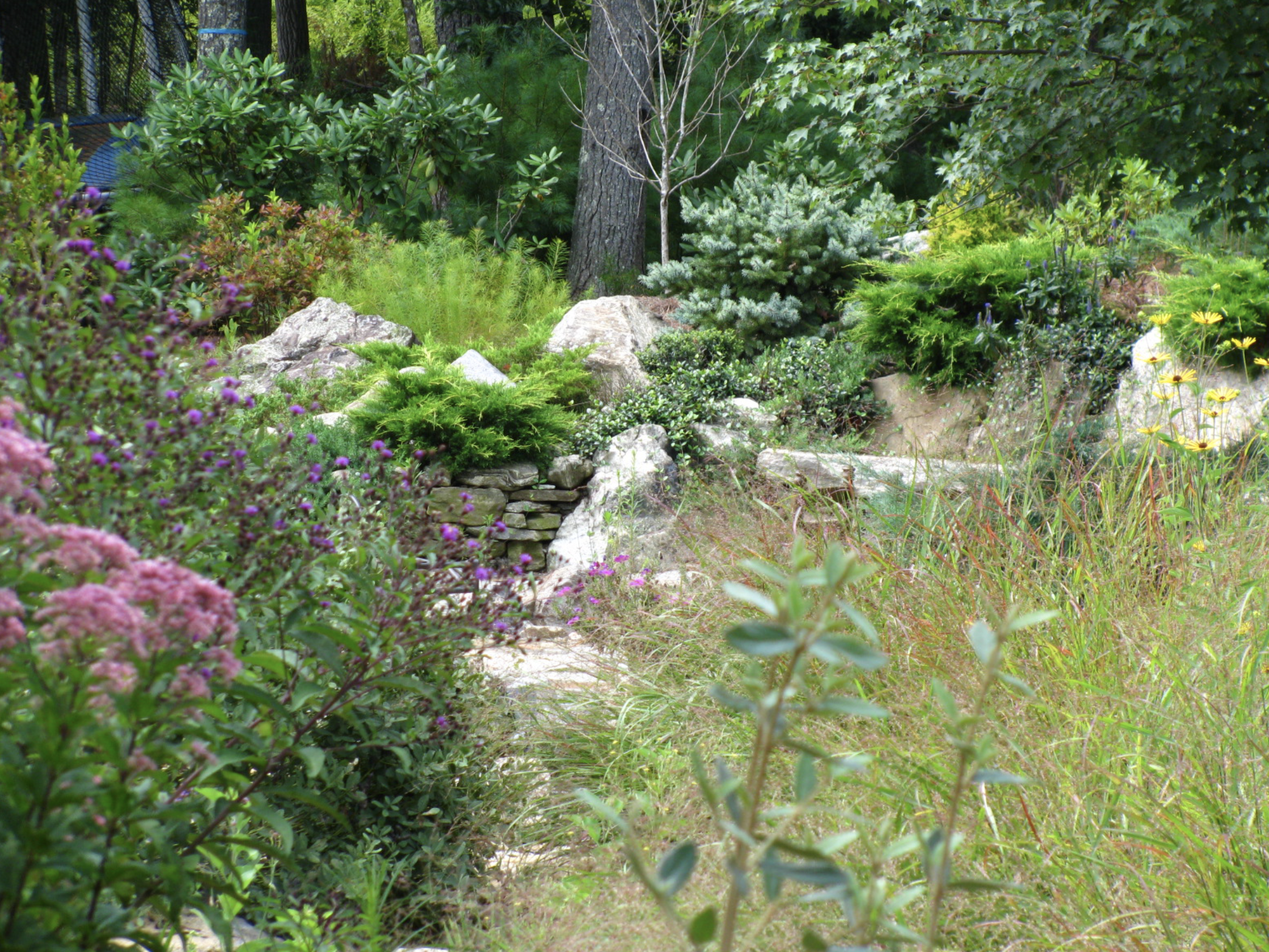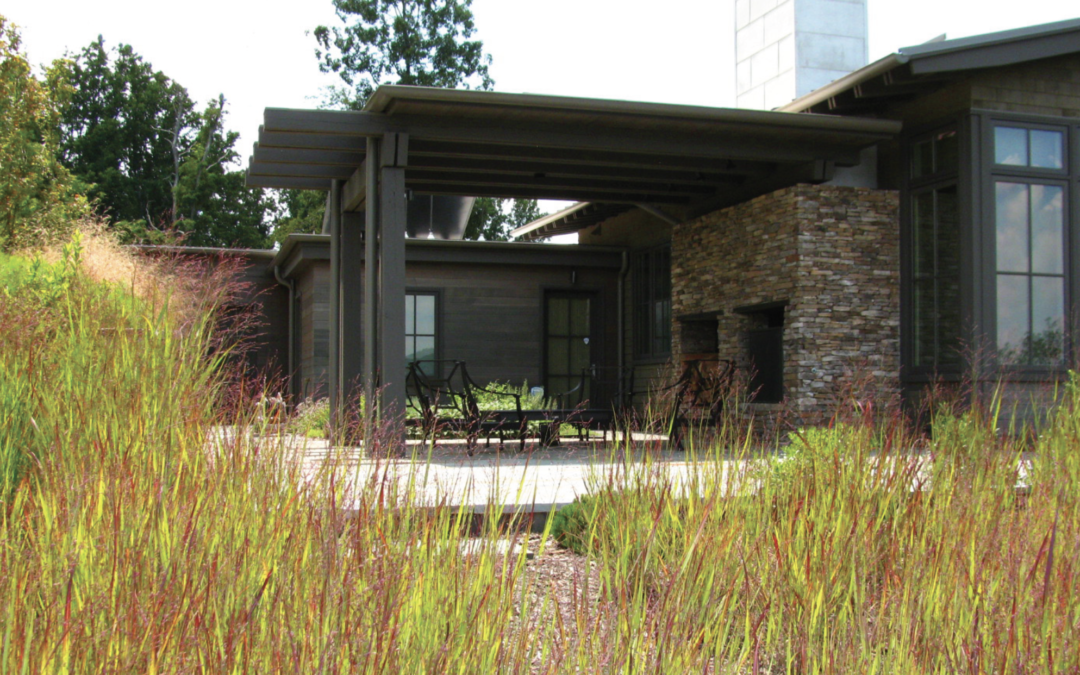Science, wellness experts and others point to studies indicating that nature offers numerous physical, emotional and mental health benefits. Particularly as spring blossoms before us, the desire to get outside and move grows, allowing us to reap a variety of health benefits such as improved sleep quality, reduced stress and increased life expectancy, among others. Michelle Kondo, a research social scientist with the United States Department of Agriculture Forest Service’s Northern Research Station, tells us “The physiological response to being outside in nature is real, and it’s measurable.
There are many physical and psychological benefits of nature that scientists have observed, which can better help us understand how nature supports wellness in the body, mind and community.” Put more simply, Native American Shikoba wisdom tells us that “The anecdote to exhaustion isn’t rest. It’s nature.”
Perhaps that’s a reason why so many are embracing the addition of outdoor spaces or building homes with outdoor amenities. Or maybe it’s just the idea of friends and family gathering in a comfortable space distinctive to each of our tastes in which we can live, laugh, love and linger away from the seeming madness of the work-a-day world because, according to the ancient Greek philosopher Aristotle, “In all things of nature, there is something of the marvelous.” Yet another benefit to outdoor spaces is the potential increase in home value, if or when a homeowner wishes to sell. Jessica Bennett in her article “7 Outdoor Updates That Add Major Value to Your Home” (for Better Homes and Gardens Real Estate, www.bhg.com, updated April 21, 2022) shared that in addition to a home’s interior features, the outside counts as well. “If you’re looking to increase your home’s sell ability, tackling a few simple projects can help your home make a good impression without having to do a complete overhaul. And, if you’re not quite ready to sell yet, investing in outdoor upgrades you can enjoy now produces a high return on investment later.” Experts from Better Homes and Gardens cited those upgrades as making the yard more functional, using landscaping and hardscaping, outdoor furniture and other add-ons that enhance outdoor activities; tidying the exterior; simplifying the landscape; fixing any damaged siding; repairing windows, and dressing up the front door. The seventh tip — attach an outdoor living space — can also prove valuable. According to a study from Rocket Homes “an attached living space, such as a deck or porch, can add almost $20,000 to the value of the home.” So, as you consider outdoor upgrades, what are the most popular trends of 2023?

It’s all about trends that mesh with your style and preferences. A National Association of Home Builders 2022 report showed that 58 percent of surveyed homeowners believed “a connection with nature or the outdoors would be top of mind in design choices” (“10 Outdoor Living Trends Expected to Be Big in 2023”, Sandi Schwartz, updated Nov. 20, 2022). Further, a January 2023 article from designlike.com, “Design News and Architecture Trends”, suggested the pandemic focused some attention on outdoor living, given the time spent at home starting in 2020. It continued that “more than 78 percent of Americans improved and made their outdoor spaces habitable during the pandemic. Similarly, 90 percent of homeowners find outdoor spaces currently more valuable.” The article also notes that the studies demonstrate spending time outdoors with nature possesses various physical and mental health benefits, and along with this new popularity comes new trends to further complement outdoor living spaces including sustainability, outdoor workspace, natural materials and Greek inspired touches, to name a few.
Tim Davis, Owner of Country Farms Garden Center and Landscape Services in Greensburg, noted that, given the seasonal weather in the region, people look to take optimal advantage of the outdoors with larger patio spaces, fire features of all types, and a move toward native plantings. “In our area, larger patio spaces, built in typically hard-to-use spaces, are more popular this year than in the past. We help our clients discover more usable property,” he said. Challenging properties, ones with banks and hillsides, can be refashioned into spaces where people can have the “feel of air, wind and an appealing atmosphere” he continued. Working with individuals to gauge their interests and goals can result in a 2D or 3D plan with multiple views to help clients visualize the project more clearly, showing its scale and how it relates to the home and area. One such project combined the desire for larger spaces and a more natural, serene feel that included a series of patios on three tiers, using a large portion of what was a fairly empty backyard. “In one patio, we built a labyrinth path, used for meditation and a sense of calm, while in another of the patios, plantings were done within the patio’s center space rather than its perimeter, since the homeowners wanted to feel in the midst of the greenery and nature.” Davis has also seen a renewed desire for all types of fire pits and updated cooking features such as outdoor kitchens, grills with flat iron griddles, and outdoor pizza ovens, which are picking up steam in the area. “More than half of our clients are buying flat cooking surfaces, a surface that slides onto a regular grill, or a combo grill featuring both options,” Davis added. “Regardless of the heating method — propane, gas, wood, or pellets — being outside with the ability to cook there has become very popular.” Setting off the outdoor space as evening advances is a new wave of outdoor lighting with improved LED technology requested more often according to Davis, adding another layer of mystique to the outdoor experience.
Richard P. Rauso, RLA, ASLA, Landscape Architect, R.P. Rauso Landscape Architects in Trafford, Westmoreland County, sees the use of more natural materials as trending in recent years with a sensitivity “to the needs of both our natural and man-made worlds …” After working in several landscape architectural firms, Rauso began his own venture in 1993, serving a range of clients from the corporate world, real estate developers and engineers to individual homeowners with the goal of developing “sustainable, functional, economical and aesthetic solutions for the construction of outdoor environments.” He has seen growth in people’s desires for outdoor living features as a means of adding curb appeal and its corresponding resale value along with other specific uses such as outdoor play areas for children, vegetable gardens or native plantings. “Outdoor spaces extend living space, giving you more options to rest, play or entertain with the added perk of health benefits,” he said. “As a result of the Covid pandemic, more and more people are utilizing public outdoor spaces for recreation and therefore, more public recreation areas are being built and/or improved.” With more residential work drawn from custom builders, referrals, his web site, Houzz, Yelp and Pinterest, his design process entails meeting with clients, developing a proposal based on the customer’s “wish list”, followed by approvals, a sketch plan and finally, a construction drawing for a landscape contractor or the client who may be a do-it-yourself person. As an added service, Rauso can visit the project during construction to observe progress. As for trends, he explained that the use of more natural (low carbon footprint) materials, vegetable gardens, use of metals in the landscape for planters and fountains, native plants, water features, use of recycled materials and outdoor home office spaces are on the upswing. “It’s all about sustainable design … utilizing native plants, capturing and absorbing storm water, providing shade for cooling and consideration of the short- and long-term carbon footprint of a project,” he noted. “The American Society of Landscape Architects (ASLA) has developed a Field Guide for healthier and more resilient outdoor spaces that serves as an excellent resource.” As a seasoned landscape architect and current President of the Pennsylvania/Delaware Chapter of the ASLA, Rauso views his calling as balancing the needs of the natural and the built environment. “Landscape architects are both artists and scientists; our designs are functional, problem solving and aesthetically beautiful,” he added.
But what of new home construction? Does the trend for exceptional outdoor spaces extend to those building a new home? Sales and Marketing Manager Jodi Brennan, Infinity Custom Homes, gives an enthusiastic thumbs up to that proposition. “Our model homes all have a major focus on outdoor living with fireplaces and outdoor kitchens,” she said. “Once customers see this living space, they all want to recreate some version of it.” With the home models designed by Infinity President Scott Blodgett, customers view these as inspiration to create or add to their own spaces. “We do everything we can to create this customized space for them,” she noted. As for trends, she cites making the outdoor space a continuation of the home’s interior as a goal. “Making the space cozy and comfortable for relaxation and social interaction is key,” Brennan remarked. “Adding a fireplace, outdoor kitchen and an area in which to ‘kick back’ can really help. Most customers work with our landscapers to add a more intricate landscaping package that they can create.” Prices for a newly constructed outdoor living space in an Infinity new build can range from $30,000 up to $100,000 or more depending on how much space and how many design features a customer is looking to add. Infinity Custom Homes offers outdoor living spaces off the entire back of a home. For those wanting a pool, Infinity Custom Homes will work with a pool contractor during the build. That pool, according to Brennan, still appears to be a desirable addition and can complement the outdoor space “beautifully.” Also noting the inevitable seasonal changes in Western Pennsylvania, Brennan is gleaning another trend. “We are starting to see customers adding screens or enclosures that keep the space more usable through the fall months,” she remarked. “Especially with a fireplace, it can keep the space warm and cozy so folks can enjoy time outside even when it gets cold.”

Frederick Bonci, RLA, CLARB, ASLA, echoes much the same trend considerations noted but with his own slant on design. A founding partner of LaQuatra Bonci Associates, now known as LBA Landscape Architecture, Pittsburgh, Bonci acknowledged the impact of the pandemic on outdoor living spaces. Recognizing that outdoor space has grown in importance in new construction as well as renovations, it has also broadened the way social engagement happens, with the outside gaining ground over the inside. “Pre-pandemic, in our public design space, one of the most desired elements was a pavilion or covered space just to get out of the weather or hot sun,” he explained. “You see this as a typical feature in parks now, simple overhead structures where yoga, community festivities and the like take place. Also, the trend of ‘give me more than six months outside,’ or in other words, extend my outdoor experience into the shoulder seasons — early spring and late fall — became a focus.” Working with a wide variety of clients, LBA initiates their process. For example, the preference is to involve the individual, couple and/or children (if that is a focus) in the design process. Meeting with them, discussing their needs, observing the site, and reviewing the home footprint is imperative. Once the client enters a contract for design services, ideas are generated with drawn concept sketches, precedent images and design alternatives, sharing this result with the client. “This does two things,” explained Bonci. “First, we come to a very early conclusion that we are the ‘right fit’ to do their work and that they are comfortable that we are on the right track. Second, it shows them a world of ideas for their home. Once we move beyond this early phase, we can then determine, with them, the full scope of services needed.” Beyond the extension of time outdoors and amenity-rich outdoor living spaces such as fire pits, cover from the elements, outdoor kitchens and other, similar items, Bonci believes that one of the biggest trends in new homes and renovations is transparency: the seamless connection between the indoor and outdoor environments. “Today, ideally these spaces are engaged and have a direct relationship to their home,” he added. “This is site dependent however, and usually more compatible with new home construction where we can collaborate with the architect to blend the indoor and outdoor experience into one.” He, along with others, finds the connection to nature a crucial trend. “We are focused on integrating the natural environment into all of our work,” he said. And that means working with native planting palettes, low impact materials, natural materials locally sourced, rain gardens and others. “Most of our clients are open to this approach. One thing that we need to balance, if the house is historic in its context, is to blend the formal aspects of the landscape as a base structure with an overlay of native plantings. Think of the rural English Country Garden that mastered this approach.” Some of this approach, along with “green” thinking can be seen in their project at The Frick Environmental Center in Pittsburgh, a Certified Living Building and Landscape using Zero Net Water and Energy. Bonci reported that here, native woodlands, meadows, wetlands and more are part of the restored landscape overlaid onto one of the most historically designed landscapes in Pittsburgh’s parks with many of these aspects available for residential designs along with concepts from other, larger projects that boast plantings that blur the lines between public and private spaces, among others. Lastly, Bonci describes his profession as one blending various disciplines into one comprehensive structure. “We also understand the social and cultural dynamics of how an individual feels in an outdoor space, totally different from how one feels within four walls. Our designs are experiential. We believe that good design is all about how an individual feels alone in a place — connected, welcome, stimulated. All spaces are great when there is a festival, event or party. They must also be good places where, when you are alone, they are engaging and memorable. That’s why people fall in love with a place and keep coming back to it … sharing it with others they love over generations.” NH


